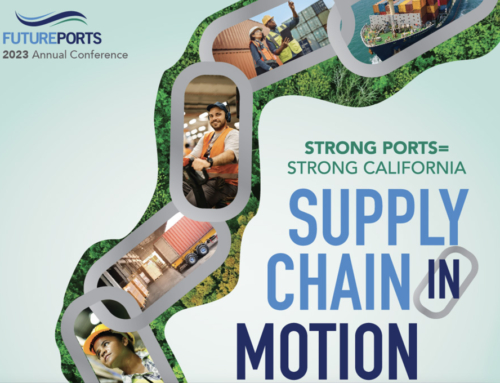Recommendations for LA County from the Commodities and Goods Movement Sector Group
Share This Story, Choose Your Platform!
Reported by Natalie Shore Peterson
LOS ANGELES – June 30, 2020, was a milestone in Los Angeles County’s efforts to revitalize the region’s economy and restore full employment in the era of the coronavirus.
At the LA County Board of Supervisors’ meeting, Mario Cordero, who heads the Commodities and Goods Movement Sector of the county’s Economic Resiliency Task Force, summarized the recommendations his working group collected from the industries and agencies it represents.
Cordero, the executive director of the Port of Long Beach, reported that responding to COVID-19 outbreak has demonstrated how vital the goods movement industry is for keeping all businesses on their feet, including those miles away from ports and harbors. Accelerating the transition to e-commerce, deploying technology to improve efficiency and communication, expanding sustainable business practices, leveraging public-private partnerships, and workforce development are among the strategies Cordero’s working group recommends for stimulating the economy and safeguarding lives and jobs.
Investment in transformative clean technology, countywide collaboration of the private and public sectors, and advocacy for funding, policy and legislation that strengthen infrastructure and advance near-zero and zero emissions technology are also essential. Specific suggestions include developing a nationwide energy strategy and dedicated government incentives that give businesses consistent opportunities to integrate clean equipment and infrastructure into their fleet operations. Current funding tends to be sporadic or contingent on factors beyond those a company can control.
Proud to have worked on this roadmap for the Commodities and Goods Movement Sector to recover economically from #COVID-19 with @MarioCorderoLB for the @LACountyBOS Click To TweetIn addition to shoring up commodities and goods movement, each recommendation offers opportunities for the sector to grow and create new jobs. Examples include online commerce expanding import and export markets in the immediate future, education and training preparing students and the existing workforce for well-paid, high-skilled jobs to come, and a stronger LA County in the long run based on an economic portfolio that has grown to include global leadership in sustainable technology and practices.
Commodities and Goods Movement is one of 13 sectors represented on the task force. All are important drivers of Southern California’s economy. The others are arts and culture, corporations, small business, education, faith-based organizations, film and digital media, nonprofit organizations and foundations, healthcare, infrastructure development and construction, labor, sports and entertainment, and restaurants, leisure and hospitality.

All five supervisors are also on the task force, whose mission is to develop actionable recommendations and best practices for reopening the economy as swiftly and safely as possible. The supervisors are looking for lasting solutions that position the region’s economy to withstand future calamities.
The supervisors pressed sector representatives to work quickly, and the Commodities and Goods Movement working group delivered its report in about six weeks, said Kat Janowicz, one of six experts on Cordero’s team. “In addition to extensive research, each member of our group reached out to other experts, who in turn reached out to others, and so on,” she said. “As a result, the recommendations of our working group are based on feedback from an extensive network of individuals representing almost every facet of our industry.”
The first thing we need to do is balance #economicrecovery actions with the health and well-being of workers, residents, and the general public. #port #transportation #logistics #cleanenergy… Click To TweetJanowicz is president of 3COTECH, a consulting firm specializing in sustainable energy and transportation, as well as the benefits and risks associated with new technology and related infrastructure. Resources she tapped into include professional organizations she is affiliated with, such as the Harbor Association of Industry and Commerce and FuturePorts. “The speed at which our working group mobilized industry and the public sector for their input and the level of collaboration and coordination among all participants is itself a model of teamwork.”
The report identifies a short list of topics that must be addressed for the Commodities and Goods Movement Sector to rebound. The first is balancing economic recovery actions with the health and well-being of workers, residents and the general public. To ensure both are secure, the report calls for public health experts to evaluate economic recovery goals, impacts on businesses and infection control measures for protecting workers and customers across the board.
Key takeaways: Accelerating the transition to e-commerce, deploying technology to improve efficiency and communication, expanding sustainable business practices, leveraging public-private partnerships, and workforce development. Click To Tweet“I’m especially excited about the opportunities outlined in the report,” Janowicz said. “They add up to a practical roadmap for how we can move forward together.”
Reported by Natalie Shore Peterson



